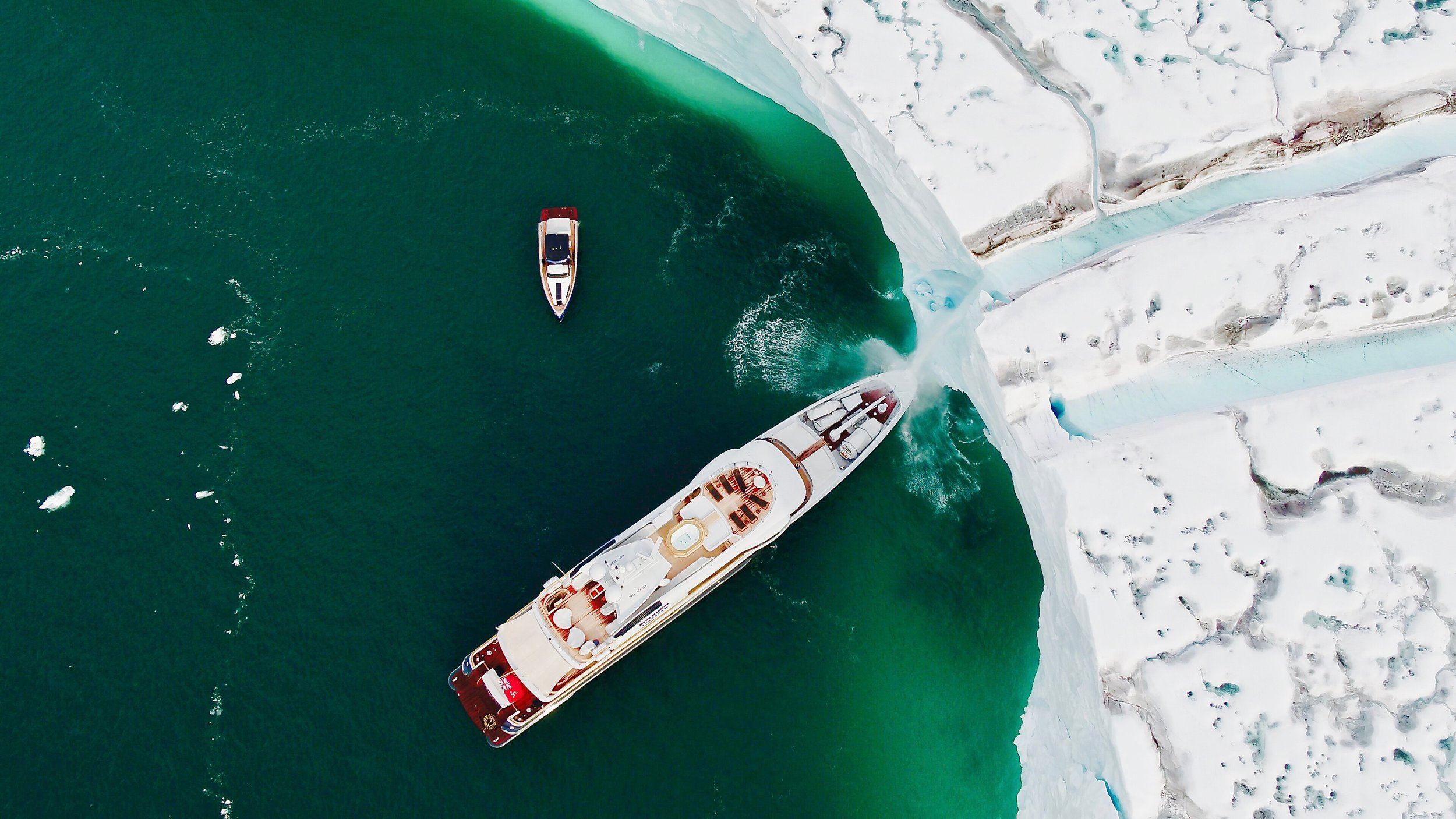Confident Cruising
Groundings and collisions cost lives and money and have significant environmental impacts. What is ahead of the vessel and underwater is the most essential navigation information that can mitigate a dangerous situation. The best prevention is to have a suite of tools working together to provide you the most information possible allowing for heightened situational awareness.
In order for a forward looking sonar to be an effective navigation tool, it must have a wide field of view, a fast update rate and be capable of sensing from the seafloor all the way to the sea surface with a single ping. This provides the crew with reliable real-time data. The FarSounder Argos Forward Looking Sonars complete this allowing their users to access more remote destinations with limited risk. With their changing demographics, yacht owners and their guests want to access more remote and exclusive destinations. One such adventure that is becoming sought after is travelling through the northwest passage. As more yachts are accessing polar regions, some of them are choosing to explore this route. Much of the route has little to no chart data and includes ever changing ice formations and shifting bottoms. Drifting icebergs and bergy bits are abundant. This is a dangerous undertaking without a tool to see under the waters ahead. This is an obvious case for using forward looking sonar. Users of the Argos systems can rest easy knowing that ice is a good target for the systems.
Another popular type of destination is the thousands of beautiful reefs, islands, and atolls in the South Pacific. In some cases, the main transit lanes are fairly well charted. Although there have been highly publicized accidents occurring even in these routes. But most yachts are interested in entering those quiet little coves and lagoons. This is where they want to go and those vast areas are practically uncharted. You would need a real time reliable navigation tool to keep the vessel and passengers safe.
Oftentimes, the chart data is no more than just a vague general reference for these types of areas. Yacht captains need to use more tools in these locations: posting a visual lookout on the bow, sending out a tender in advance, or using a downward looking multibeam to put together a bathymetric view of the areas ahead of the vessel to map the safe passages. Rather than using one of these methods, Argos 3D Forward Looking Sonar can show the safe passage directly from the yacht. Crew will be able to look ahead with a wide field of view, from the sea surface to the bottom, in real time. It deems much of the other alternative strategies unnecessary.
Yet another polar destination rising in popularity is Antarctica. If one considers the total number of people visiting Antarctica as compared to the immense size of the continent, a visitor would think that they would be exploring virgin coastlines and exclusive anchorages. However, in practice most of the yachts and cruise ships visiting our southernmost continent stick to a relatively small and well known itinerary.
This limited cruising area is due to Antarctica being another location with very little charted coastline, as well as having ever changing ice shelves and icebergs. Most ships, particularly cruise ships do not want to wander far from other ships which may be needed to help them navigate out of a challenging area.
Once again, navigating in this environment is a perfect application for Argos 3D forward looking sonar. With the added confidence of knowing what’s ahead underwater, a yacht captain can increase their ability to safely access a more exclusive shoreline, getting a little farther off the beaten track at the bottom of the world.
At the end of the day, it is important to minimize risk through advanced navigation technology. Surely reducing the likelihood of crew, guest, or vessel casualties is important. It is also important to avoid environmental costs from groundings in sensitive areas. And many of the most sought after, exclusive yacht destinations are in these sensitive areas: the great barrier reef, the Aleutian Islands, the Galapagos Islands, Antarctica, just to name a few.
There are many examples of clean up costs and penalties for damage from ships running aground in such locations, and historically some of these from relatively small accidents have been in the tens of millions of dollars. Reducing environmental impact was one of the motivations when the FarSounder team was developing Argos Sonar technology. “How could we help vessel operators avoid hitting rocks and whales?” It turned out that there was a commercial demand for such capabilities which led to the development of the products offered today.
Clearly keeping your yacht in operation longer and deploying the most advanced safety tools makes economic sense. Argos Forward Looking Sonars are the perfect solution. It gives the crew heightened situational awareness allowing them to reach the exclusive destinations.


